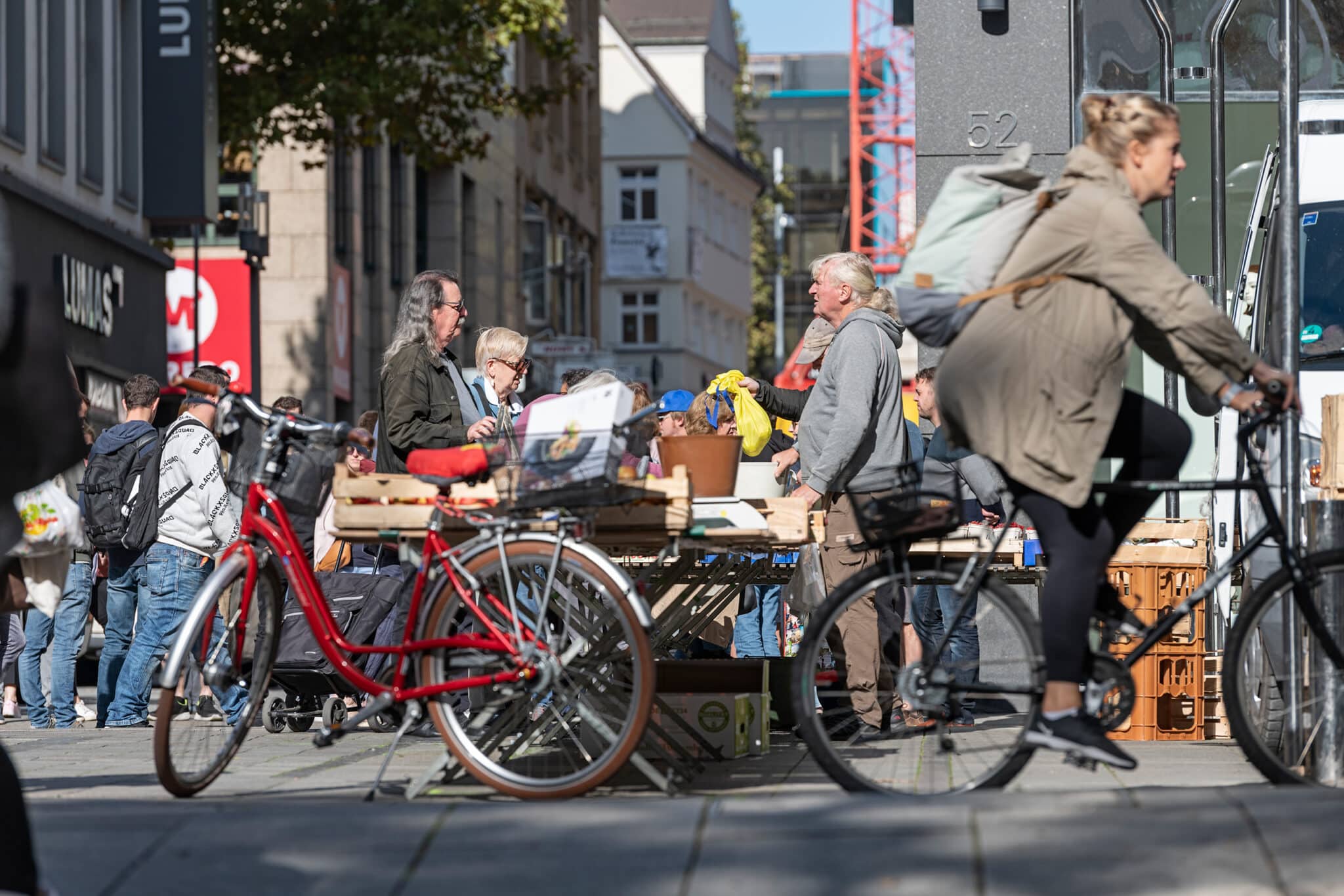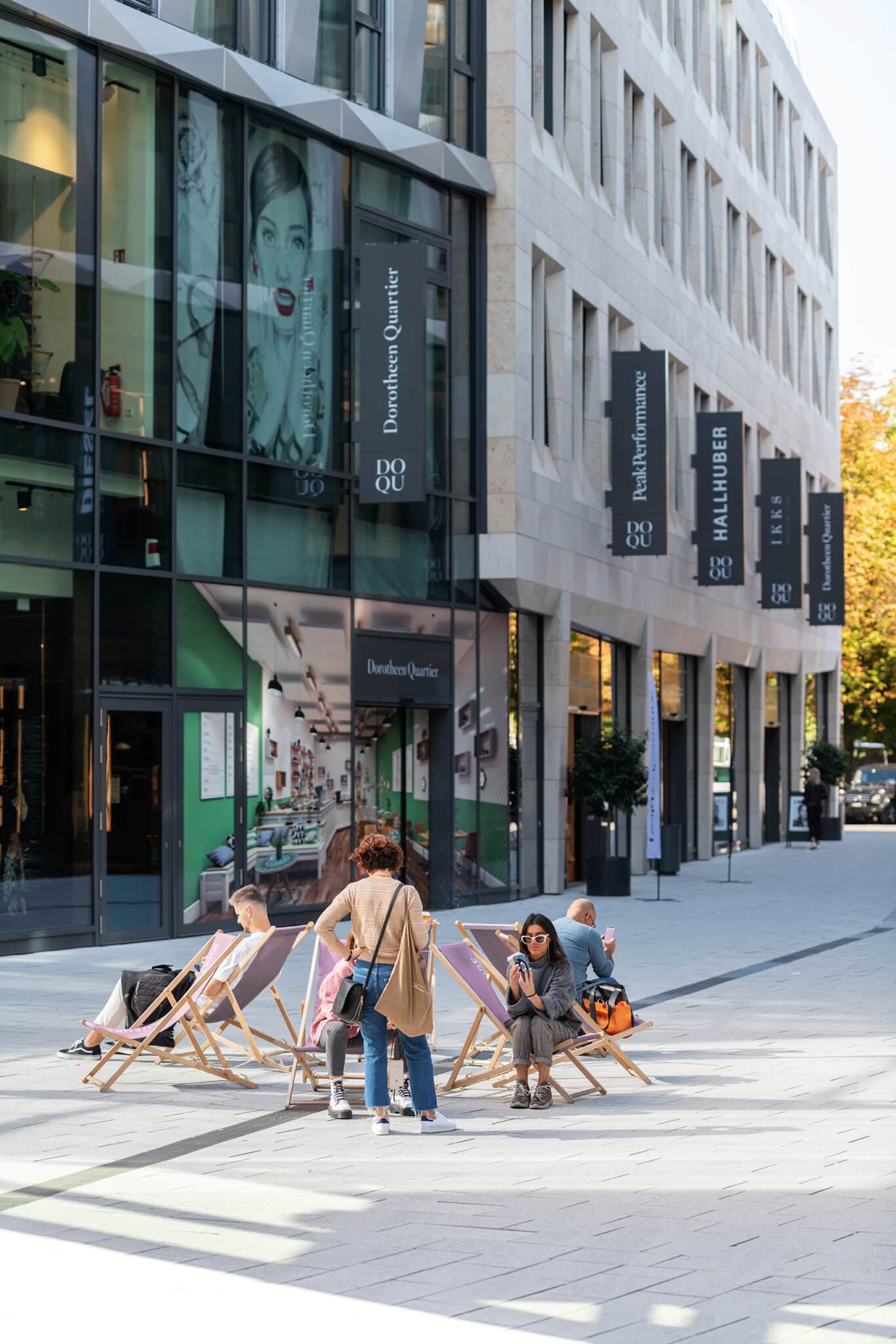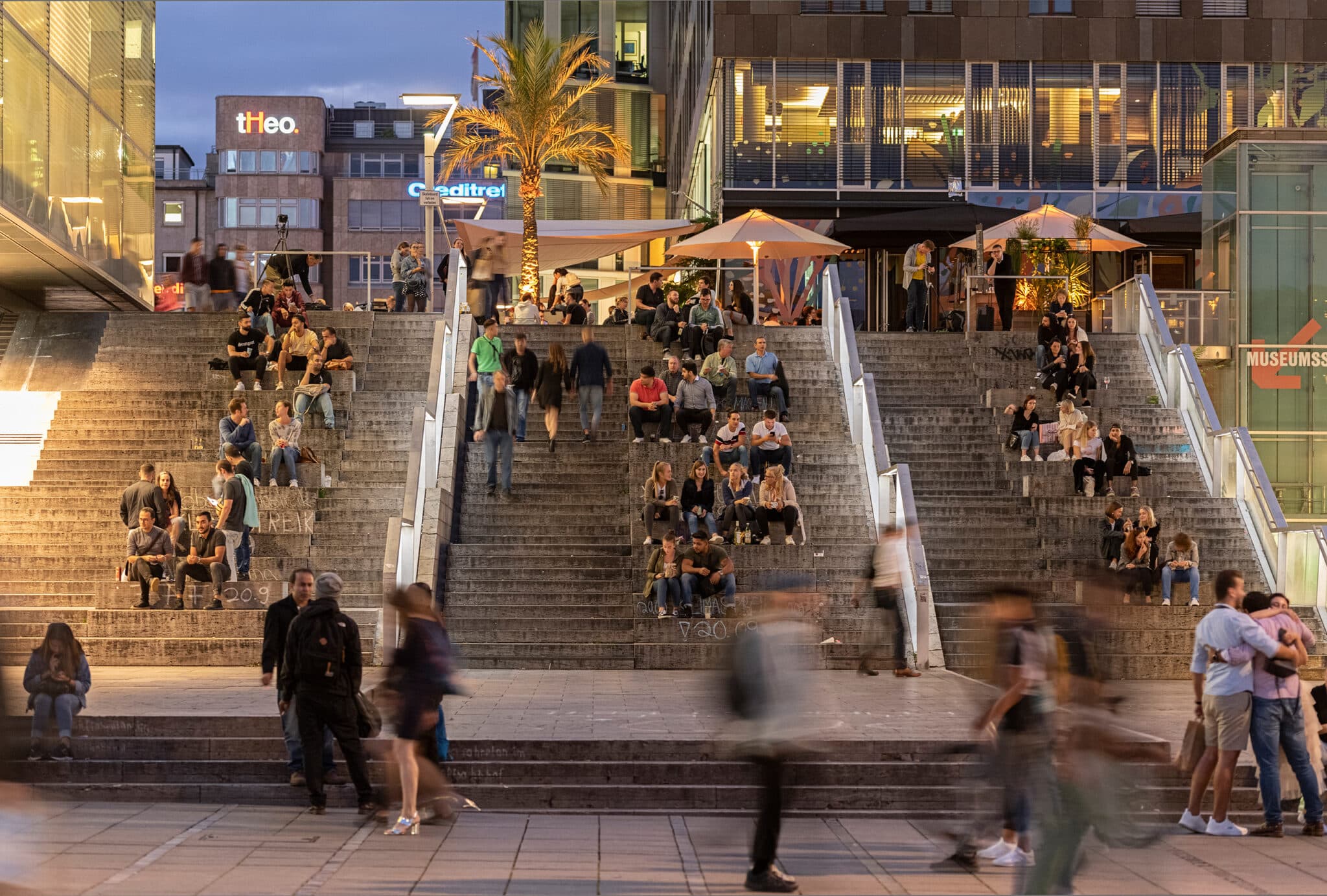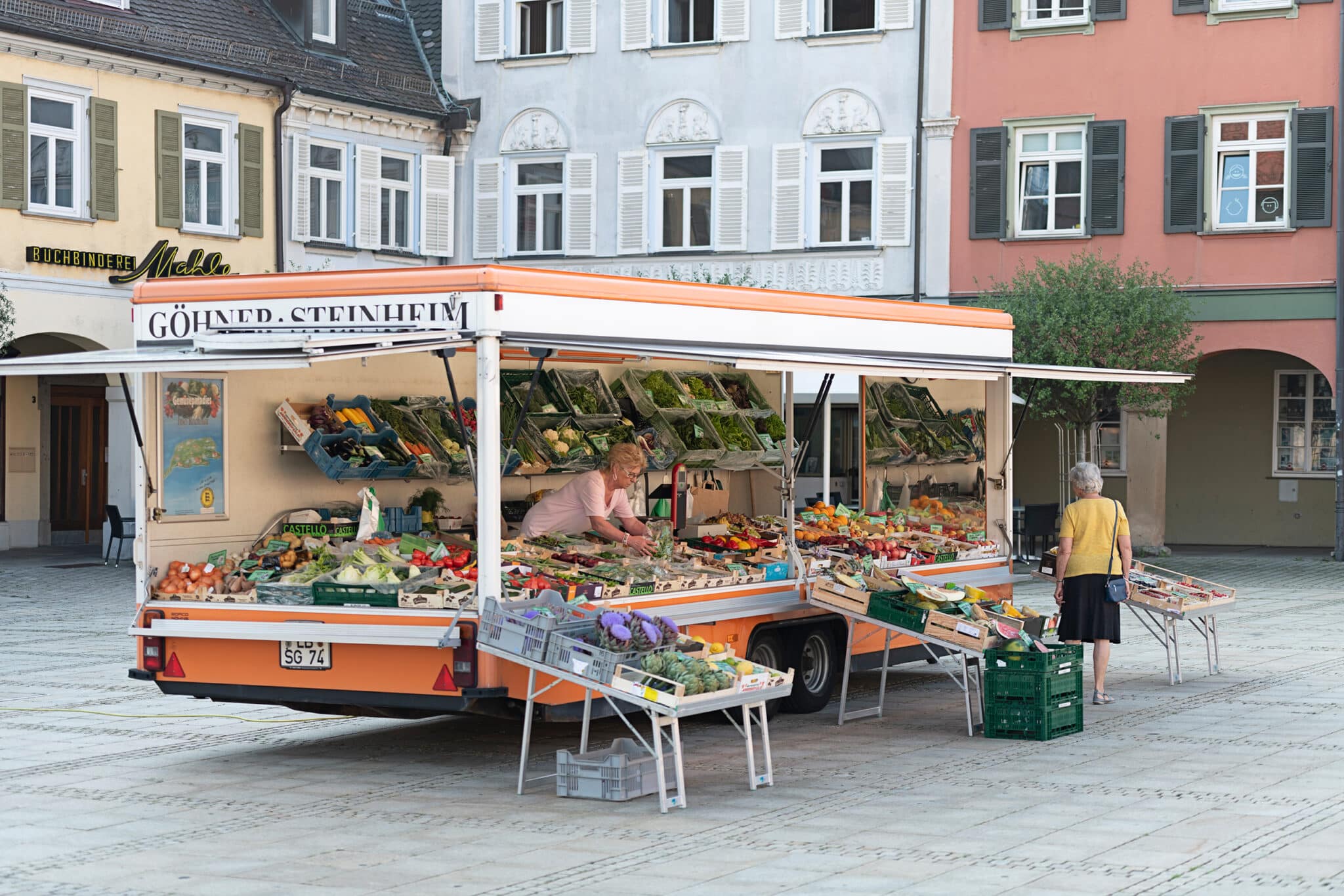IBA’27 board of trustees article
Transitioning to a different kind of city centre
By Tim Rieniets
In the autumn of 2018, Internationale Bauausstellung 2027 StadtRegion Stuttgart (International Building Exhibition, IBA’27) published five »topics and spaces« to serve as guidance for the project work over the subsequent years. One of those topics is »The Future of Centres« and focuses on the challenges faced by city centres in the Stuttgart Region.
At the time, no-one could have known that a virus called SARS-CoV-2 would trigger one of the biggest health crises in history. The crisis cost people their lives, pushed hospitals to breaking point and proved a real test to the healthcare system. It also pervaded every other area of life, whether economically, culturally or socially. In cities too, the effects of the coronavirus pandemic could be felt everywhere. It was noticeable on the streets, in schools and at work – and most particularly in city centres. During the lockdowns, places where Saturday afternoons were once characterised by traffic jams and the hustle and bustle of human traffic were now eerily quiet. There were no customers in the shops and no guests in the restaurants. Just empty streets and deserted squares.
No sooner had the city centres got a handle on the pandemic, they were faced with new challenges. One is the energy crisis brought about by Russia’s hybrid war on Ukraine, which has already prompted some retailers to cut their opening times. Another is the increasing cost of living, combined with inflation running at a level unparalleled in recent history. A further factor is the staff shortages affecting both retail and the restaurant trade. All of these issues have spurred a lively debate about the future of city centres. With its topic »The Future of Centres«, IBA’27 finds itself at the heart of this debate.
Online shopping: a blessing and a curse

Society and the economy suffered severely during the coronavirus pandemic. But let’s imagine for a moment what it would have been like if the pandemic had hit us 20 or 30 years ago. What would have happened if the shops had been ordered to close in order to protect public health? Perhaps the large mail order firms like Quelle and Otto would have worked through the night to fulfil customer orders by post. Maybe the postal system would have had to rush to hire new staff to handle the sudden wave of packages. Maybe additional freight forwarders would have been contracted to deliver them, or maybe the army would have even gotten involved in order to ensure the provision of supplies to the population and stave off the worst effects for the economy.
If the virus had been around back then, the disaster would have been much greater than today. Nowadays, online shopping has come into our lives (or rather onto our screens) and established distribution channels that worked almost seamlessly when the bricks-and-mortar retailers had to close their doors. With the exception of initial shortages of toilet roll and pasta, consumers did not have to curtail their shopping habits dramatically.
Online shopping is the big winner coming out of the pandemic, because people who avoided shopping online in the past were forced to switch (and will now continue to shop online). The biggest losers arising from the pandemic are the bricks-and-mortar retailers. Thousands of shops and food businesses did not survive the pandemic-related closures. Some of them have returned, but the growth in online shopping during the pandemic will have serious implications for bricks-and-mortar retailers. Even if lots of things appear to have returned to the way they were before the pandemic, they will not be the same. This is because, unlike in the past, everyone has now understood that we don’t really need city centres any more – at least not for shopping. We can get by just fine without them.
And this is the real tragedy, namely that city centres have lost their status as vital centres of trade. In more recent times, we had already become accustomed to the fact that online competitors were ousting some sectors from city centre locations. City-centre bookshops, record stores or toy shops had almost become a thing of the past. The difference now is that we are speaking not about the fate of individual sectors but about the future of entire city centres.
Competition from the inside
However, it is not just online shopping that is to blame for the retreat of certain offerings from the city centres. Bricks-and-mortar retailers are themselves partly responsible for their fate, as they have for many years played into the cut-throat competition for revenue and profits. This is evident when we look at how the size of retail spaces has developed over time. In 1970, the average retail space in West Germany was 0.56 square metres per capita. Nowadays, this figure has risen to nearly 1.5 square metres.[1] However, the consumer spend has not increased at the same rate. This means that the revenue a retailer can generate per square metre nowadays is considerably lower than in the past.[2] And this has been the downfall of some shops that were unable to compensate for these losses elsewhere.
Small businesses have been hit hardest by this development. While in 1965 the average grocery store was 400 square metres in size and sold 3,200 products, by 2015 this had increased to 11,600 articles over 1,150 square metres.[3] Comparable trends have also been observable in other sectors. Nowadays, we buy our tools from OBI, our books of course from Thalia and our electronic devices from Media Markt.
The consequence of this constant competition is that the small – often still owner-managed – businesses, which for a long time added character and personality to city centres, are under threat. They are being ousted by the large chains and high-volume specialist retailers that carry a much more extensive product range but have no connection to their location.

The third guilty party in relation to the fate of retail are the municipalities. These local authorities have permitted more and more spaces to be zoned for large-scale retail, generally outside of city centres. This allowed specialist retailers and shopping centres to spring up on greenfield sites. Not only is their dull and outsized architecture a source of annoyance, they also compete with traditional central retail locations for customers. It should have been clear that there would be losers as well as winners as a result of such development. After all, there is no limit to how retail spaces can multiply, but the money that people have to spend there is indeed limited.
So it’s fair to say that city centres had changed long before the pandemic, and they will continue to do so in its wake. The coronavirus pandemic merely amplified these trends, providing an involuntary »sneak peek« into the future. A future where city centres as we know them will no longer exist.
Who makes the future?
It’s always rather unnerving when there is a sudden threat that something we have taken for granted will disappear. Maybe that’s how some people feel about the idea that city centres will someday no longer be centres for retail. But there’s also something comforting about this idea. It releases us from the paradigm of consumerism and forces us to think about solutions that do not involve shopping. There is already plenty of inspiration, with some examples also being tried out as part of the IBA’27 Projects such as »Neue Mitte Leonhardsvorstadt« (Leonhardsvorstadt / Züblinareal). We could introduce more food businesses, recreational offerings and housing. We could bring trades and manufacturing back into cities. We could create not-for-profit offerings and promote cultural uses. And of course, everything needs to be much greener and more sustainable. But what’s the right approach? And what is even feasible?
There’s a very easy answer to the second question: Considering the market conditions currently prevailing in city centres, we should not expect any ground-breaking changes. The rental prices being charged in city centres have reached such exorbitant levels that virtually any use other than retail is precluded. Rental prices of more than EUR 300 per square metre have become commonplace in the most sought-after parts of large German cities. Even in smaller cities and less attractive locations, they are far in excess of anything that would be achievable through residential use for example, not to mention cultural or community uses, which are known to depend on low rents. It gets more affordable on the upper floors, but many property owners don’t even try to let out those floors, because the high yields from the grounds floors mean it’s not worth the effort.

If the city centres of the future are to look different but remain vibrant, property owners will have to radically reduce their expected returns. But they will only do that if they have no choice. And that point is still a long way off. Even in locations subject to high vacancy rates, property owners prefer to leave their properties empty than to revise their rental concept, in the hope that they will find a high-paying tenant at some point again in the future.
One could speculate that the fall in demand for commercial real estate in some areas will automatically force property owners to adjust their expected returns downwards. Nevertheless, prices are unlikely to drop far enough to allow for affordable housing or cultural uses in places where up until recently stores like H&M or Douglas were paying high rents. Even if this were to happen, it would still not be a guarantee that this situation would lead to a better future for city centres.
A brief look at the city centres affected confirms these findings. Neither retail nor the property market has managed to counter the downward spiral of recent years in any meaningful way. There are no new use concepts, no new architecture, no new financing or operator models. Everyone is carrying on as before, despite it becoming clearer than ever that the current model will no longer work. Apparently, the risk of joint failure is more palatable than the risk of individual change. Or, as US economist Maynard Keynes once put it: »Worldly wisdom teaches us that it is better for reputation to fail conventionally than to succeed unconventionally.«
Without decisive intervention in terms of policy and planning, we cannot expect things to change for the better. However, the stakeholders responsible – especially the local authorities – do not have the appropriate means. They have neither the money nor the tools under planning law to intervene effectively. They have to be content with the role of mediator and facilitator. In order for this to change, the local authorities need corresponding political and planning law tools. And these don’t even exist yet.
The IBA and the city centre
It will take time until these tools are created (if indeed they are created), and this is valuable time that would have to be used for the transformation of city centres. A fourth stakeholder could get involved during that time – not retail, not the property market or the local authorities, but an independent stakeholder like IBA’27. It may not have the financial or legal means to intervene either, but it is independent, credible and an expert in the field. IBA’27 also offers strong potential for communication. It can bring people together and fill them with enthusiasm for the future of their cities. Last but certainly not least, it can create an atmosphere where innovation can flourish. An atmosphere where people don’t have to worry about reputational losses if they dare to try something unconventional.
It’s possible that the COVID pandemic may even prove to be a blessing for city centres, because it has drawn our attention to the negative developments in our city centres while there is still time to alter our course. The second piece of good luck is IBA’27. Its topic »The Future of Centres« is very timely, and it can provide the impetus for change that other stakeholders are not yet in a position to offer.
[1] Rahlf, Thomas: Zeitreihendatensatz für Deutschland, 1834-2012, in histat Historische Statistik. https://histat.gesis.org/histat, January 2022
[2] Statista: Umsatz je Quadratmeter Verkaufsfläche im Einzelhandel in Deutschland in den Jahren 1970 bis 2018. https://de.statista.com, January 2022
[3] Handelsdaten: Verkaufsfläche und Anzahl Artikel von Lebensmittelgeschäften. https://www.handelsdaten.de, September 2016
About the author

Tim Rieniets is professor for urban and spatial development in a diversified society at the Leibniz University of Hanover. His research and brokerage activities inter alia focus on the topics of shrinking cities, social segregation and integration in urban development as well as conversion and revitalization strategies for residential buildings, commercial properties and churches.
Tim is a member of the IBA’27 Board of Trustees.

